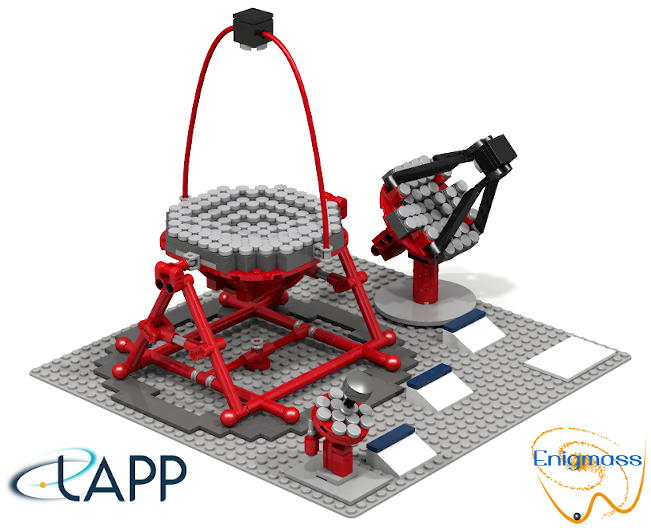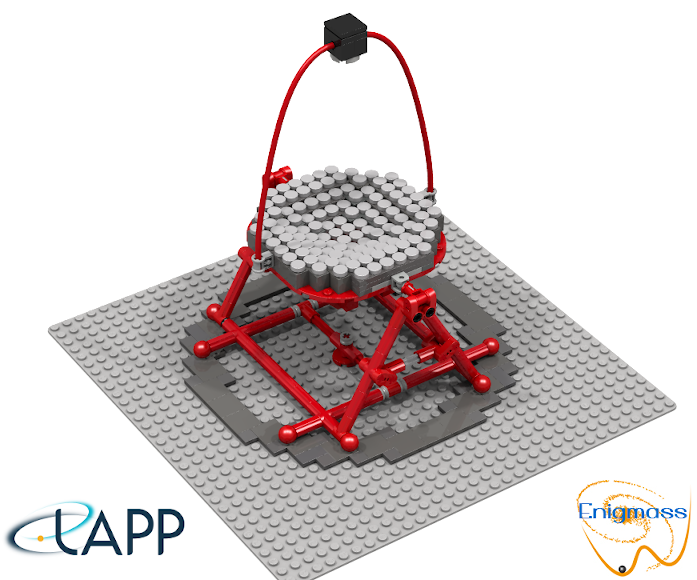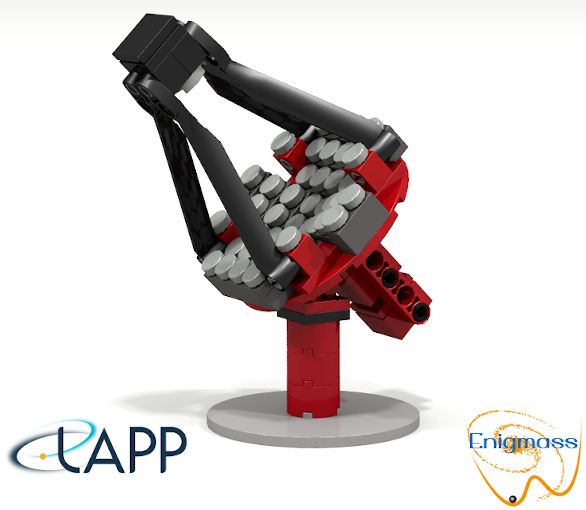3D render of the 3 CTA telescope types
This pictures is a 3D render made with Lego Digital designer and Povray of the 3 type of telescopes of CTA.

Large Sized Telescope
The four 23 meter class telescopes (LST : Large Sized Telescope) will operate at low energy, between 20 and 200 GeV. They have a moderate field of view (FoV) of the order of about 4.5 degrees.
The LEGO model is made of 423 pieces and can rotate on all axis as in reality
 The LST is an azimutal telescope. It has a parabolic reflective surface which is supported by a tubular structure made of carbon fiber and steel tubes. A reflective surface of 400 square meters collects and focuses the Cherenkov radiation into the camera, where photo-sensors convert the light in electrical signals that can be processed by dedicated electronics. The total weight of the telescope is around 100 tons.
The LST is an azimutal telescope. It has a parabolic reflective surface which is supported by a tubular structure made of carbon fiber and steel tubes. A reflective surface of 400 square meters collects and focuses the Cherenkov radiation into the camera, where photo-sensors convert the light in electrical signals that can be processed by dedicated electronics. The total weight of the telescope is around 100 tons.
Middle Sized Telescope
From around 100 GeV to 10 TeV, les 40 12-meter class (Middle Sized Telescope - MST)will operate with a Field of View of 7 degrees.
The LEGO model is made of 114 pieces and can rotate on all axis as in reality

The MSTs will be sensitive to gamma rays in the core energy range of CTA, from about 100 GeV to 10 TeV. The telescopes have a modified Davies-Cotton design with a reflector of 12 m in diameter on a polar mount and a focal length of 16 m.
Small Sized Telescopes
Operating between a few TeV to 300 TeV, 70 four meters diameter (Small Sized Telescopes - SST) telescopes with a FoV ranging from 9.1 to 9.6 degrees will be built.
The LEGO model is made of 39 pieces and can rotate on all axis as in reality

The dual-mirror designs allow excellent imaging across a wide field of view with a short focal length. The resulting small plate scale allows the use of silicon photomultipliers (SiPMs), assembled in very compact cameras.
This model have been realized with the help of the 1001Bricks society http://blog.1001bricks.com/about















